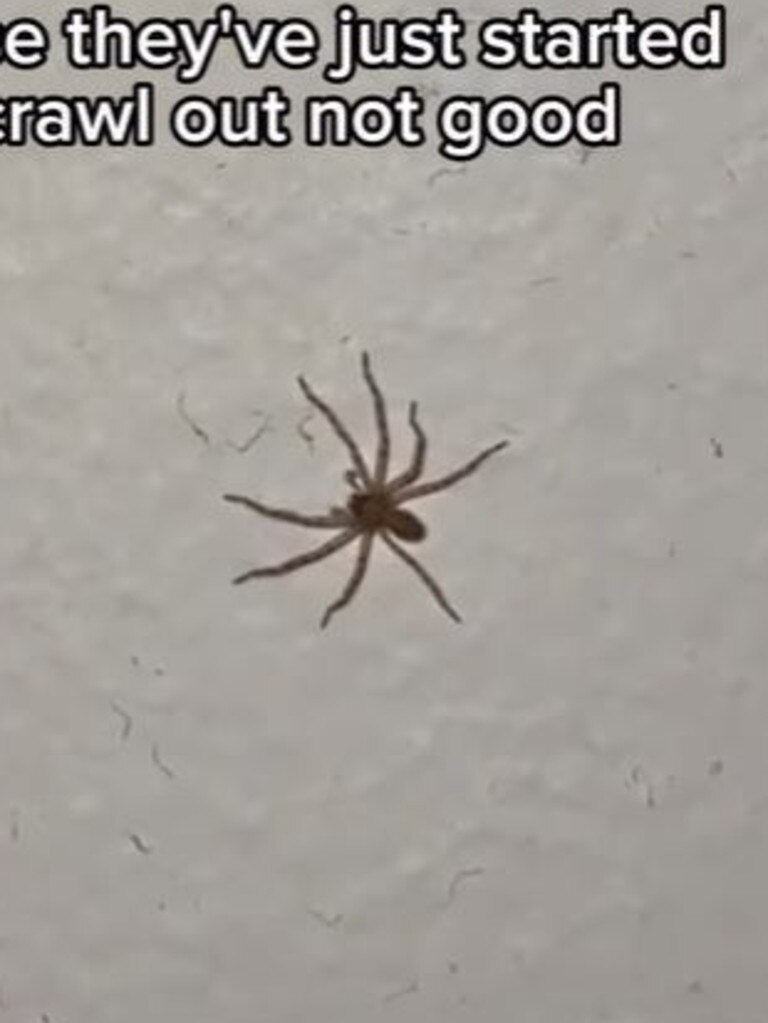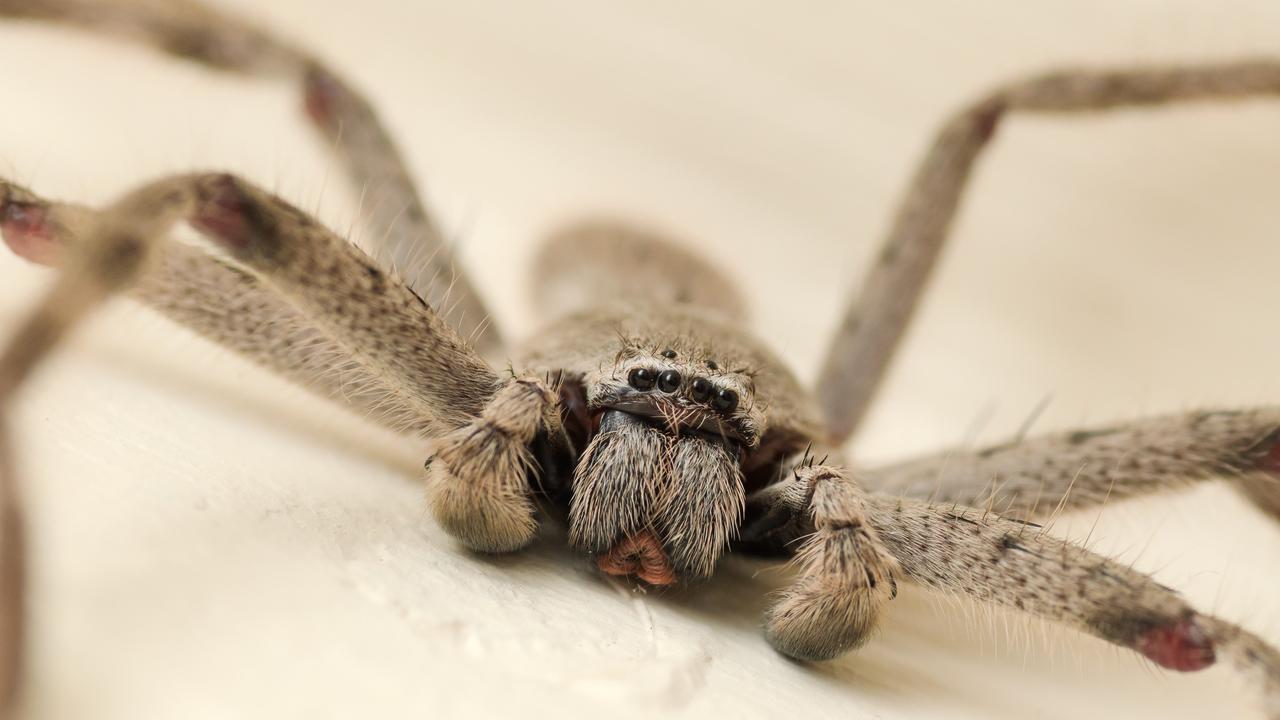’Tear down the place’: Aussie shares horror spider discovery
A video showcasing hundreds of huntsman spiders overtaking a home has left Aussies horrified.
A terrifed young Ausse has captured the horrifying moment they realised hundreds of spiders are overtaking their home.
Olive Lorikeet, a singer from Sydney, posted a video to Instagram showcasing their horrific living situation, sending viewers squirming.
“It’s that time of the year where a huntsman lays 300 baby spiders in my room,” Lorikeet said.
“I know they’ve hatched somewhere like in my wall or behind my bed because they’ve just started to crawl out.”
“Not good,” they said.
The caption read: “This has happened at least five times in the last three years.”
At least three baby huntsman spiders can be seen crawling up a wall in the video.


The footage has racked up thousands of views with people flocking comments to express their shock at the situation, as well as comment on just how casually and “chill” Lorikeet speaks about this “spider invasion”.
“Time of the year where you buy a new house that is elevate 30 meters into the air where no spider can ever dream of getting,” one person wrote.
“It’s times like this I’m glad Australia is on the other side of the world,” another person chimed in.
A third wrote: “I ain't being overdramatic when I say I’d pass away.”
While a fourth questioned: “Have you considered burning your house down?”
Several people were able to piece together what was happening in the footage, with one viewer correctly explaining: “They are the ones that survived.”
“Baby huntsman's have to escape the mum immediately to escape being eaten,” they wrote.
“These are a few days old because there microscopic at birth and they literally teleport across the wall in the blink of an eye.”
Huntsman spiders are a common household name in Australia and can be identified by their large size and long legs.

Despite their somewhat intimidating appearance, the spiders are not considered to be dangerous and while they do possess venom, their bite typically only causes mild effects.
Regardless, people still have a fear of the spider when spotting them indoors.
Dr Matt Shaw, Arachnology Collection Manager at the Australian Museum in Sydney, has explained while the spiders prefer gum trees with some bark to shelter under, they also sometimes considered our houses their homes.
“Huntsman spiders are used to ascending vertical surfaces, in search of prey like moths and cockroaches and they will enter houses,” Dr Shaw said.
“Houses are mostly not humid enough and with too little prey to provide great living spaces for them — so they never “overtake” houses.”
“Summertime is the typical time for increased huntsman activity and a good chance for spiders to build up food reserves to lay eggs,” he said.
Dr Shaw explained female huntsman spiders will pick somewhere undisturbed and lay around 200 eggs.

Once hatched, the baby huntsman spiders have to run for their lives, as due to the spiders’ predatory nature — mother spiders can eat their young.
“Like young animals of many species, and especially many spiders, they need to disperse simply to find a suitable spot to feed and grow,” Dr Shaw said.
“Their fleeing/running behaviour can be thought of as a good way of avoiding all sorts of predators (not just their mum, humans trying to squash them too, plus many others).”
“The lack of nice, convoluted places to run into for shelter in a typical house, would keep them moving; trying to find situations to hide from bigger predators,” he said.
If huntsman spiders are unwelcome roommates Dr Shaw suggests people to do what they can to stop spiders crawling under doors and other crevices, as well as consider having less lights on at night, as they attract insect prey, increasing the chance of spiders being in the vicinity.





